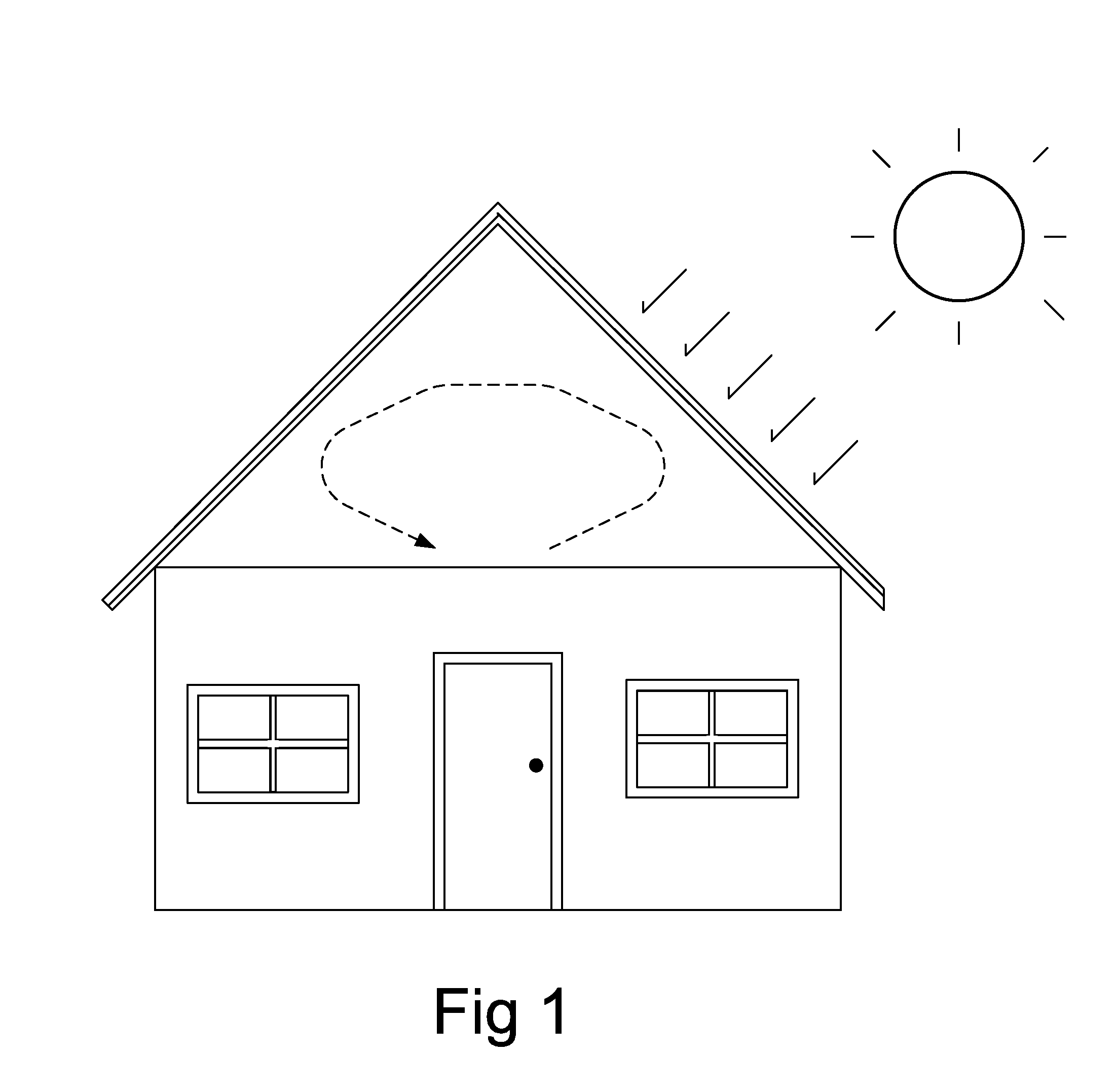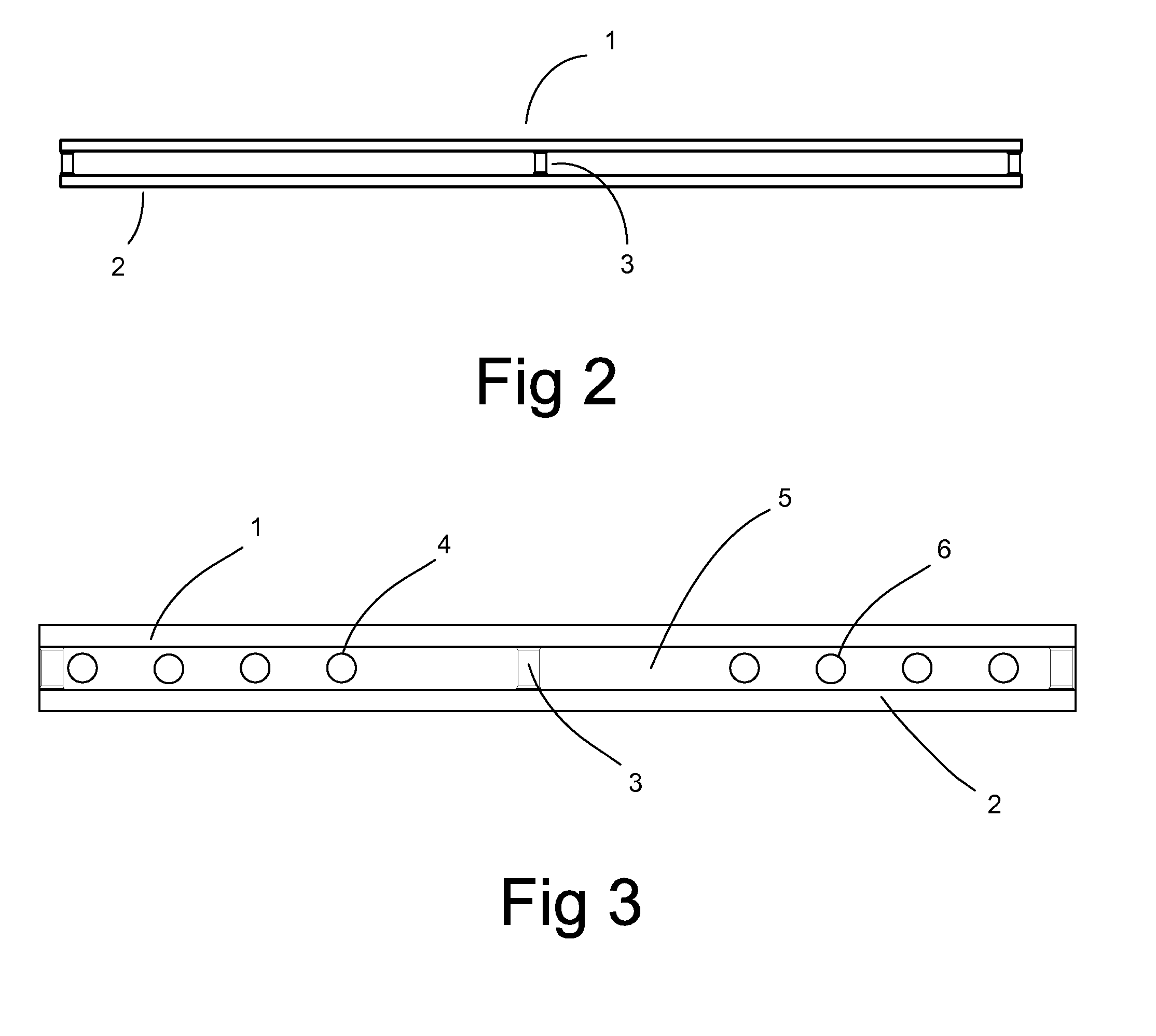Smart Solar Roof
a solar roof and solar energy technology, applied in sustainable buildings, light and heating equipment, machine operation modes, etc., can solve the problems of short working time in every geographical area, failure to completely expels all heat energy, and device failure to properly vent all heated air, etc., to achieve superior efficiency, high energy efficiency, and high efficiency rate
- Summary
- Abstract
- Description
- Claims
- Application Information
AI Technical Summary
Benefits of technology
Problems solved by technology
Method used
Image
Examples
Embodiment Construction
[0018]In the embodiment shown in FIG. 1, the invention shown as an expression how a typical housing unit circulates unwanted heated air inside a typical roof. Typical of housing units most of the air circulates and encapsulates by the incoming radiation. This circulation of heated air increases dramatically a heat bubble within.
[0019]FIG. 2 illustrates a bi-level frame constructed below the roof top material. The illustration shows how the upper level metal sheet (1) would receive the incoming radiation by conduction to the inside into its conduit of which it would be supported by inner supporting column (3) which are themselves supported by the lower level metal sheet (2).
[0020]FIG. 3 illustrates a cross section view between the upper metal sheet (1) and the lower metal sheet (2) with a view of an intersecting rail (5) with pump-to-chamber perforations (4) that allow for a continual flow of air through the chambers. The inner supporting columns (3) restrict free flow of air thus on...
PUM
 Login to View More
Login to View More Abstract
Description
Claims
Application Information
 Login to View More
Login to View More - R&D
- Intellectual Property
- Life Sciences
- Materials
- Tech Scout
- Unparalleled Data Quality
- Higher Quality Content
- 60% Fewer Hallucinations
Browse by: Latest US Patents, China's latest patents, Technical Efficacy Thesaurus, Application Domain, Technology Topic, Popular Technical Reports.
© 2025 PatSnap. All rights reserved.Legal|Privacy policy|Modern Slavery Act Transparency Statement|Sitemap|About US| Contact US: help@patsnap.com



